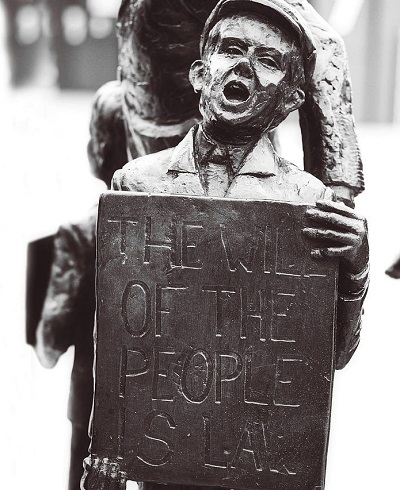In the grand, sometimes grandiloquent, halls of the United States Congress, an observer, if not entirely inattentive, might note a peculiarity: the persistent preponderance of age over youth, experience over novelty. The Capitol, ostensibly a vibrant symbol of democracy, increasingly resembles a venerable club where the old guard reigns supreme, their grip on power as enduring as it is anachronistic. This gerontocracy, a term one might reluctantly borrow from more autocratic regimes, presents a curious puzzle: why does the average age of a U.S. congressperson stubbornly remain on the higher rungs of the age ladder, and why do these elected officials, year after year, campaign for a return to their well-worn seats?
The answers to these questions are as intricate and intertwined as the ivy that clings to the storied walls of their political edifice. Firstly, let us consider the intoxicating allure of power and the human reluctance to relinquish it. Power, once acquired, is a nectar too sweet for many to forsake voluntarily. It seduces with its promise of influence, its capacity to shape narratives, and its ability to effect change – or stymie it. For the incumbents of Congress, many of whom have spent decades weaving their webs within its corridors, the thought of stepping aside for a younger, perhaps more vigorous, successor is akin to abandoning a part of their own identity.
But this is only one thread in the tapestry. Another is the electorate itself, a body often criticized for its supposed desire for change yet paradoxically exhibiting a tendency towards the familiar, the tried and tested. The devil you know, as the adage goes, is often preferred to the angel you don’t. In this context, the longevity of congresspersons can be seen as a reflection of a constituency that values experience, or at least the perception of it, over the unproven promise of youth.
Furthermore, the mechanics of political campaigning and fundraising are such that they favor the entrenched over the emerging. Incumbency carries with it not just name recognition, but a network of donors, a machine of support that can be prohibitively expensive and complex for newcomers to replicate. The deck is stacked, so to speak, in favor of those who have already played the game and won.
Then there is the matter of the system itself, a legislative labyrinth that rewards tenure and seniority. The longer one serves, the greater one’s influence typically becomes, through chairmanships, committee assignments, and the like. This self-reinforcing cycle naturally incentivizes longevity in office, creating a legislative landscape where the old trees, deeply rooted, overshadow the saplings.
Lastly, one must not overlook the cultural aspect. In a society that often venerates youth and innovation, it is somewhat ironic that its legislative body skews towards the other end of the age spectrum. This dichotomy can be attributed, in part, to a cultural reverence for experience and wisdom, qualities traditionally associated with age. The elder statesman, with his or her years of service, projects an aura of stability and continuity, qualities that are comforting to a significant portion of the electorate.
In conclusion, the advanced average age of U.S. congresspersons and their propensity to cling to office are phenomena born out of a confluence of personal ambition, electoral psychology, systemic biases, and cultural attitudes. It is a complex weave, one that resists simplistic explanations or solutions. As the nation grapples with unprecedented challenges and rapid societal changes, the question of whether this gerontocratic trend serves its best interests remains a topic of fervent debate, a debate as enduring as the tenure of some of its participants.
You may also like
-
Manifest Destiny 2.0: Trump’s Bizarre Obsession with Annexing Canada
-
Americans Vote 2024: You Have a Choice Between This Old White Guy, or That Old White Guy
-
The Enduring Human Cost of the Israel-Hamas Conflict
-
The Illusion of American Exceptionalism: Rethinking Freedom and Governance
-
The Seductive Art of Discord: A Choreography of Political Diversion in America
